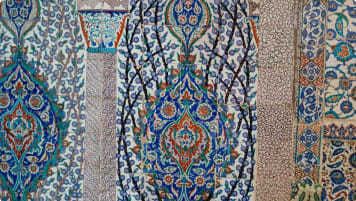Discovering Georgia: The Definitive Guide for Travellers
Learn before visiting Georgia on a small group escorted tour for mature and senior travellers as a couple or solo about the key places to visit. Understand the influence of the Christianity from Armenia, Islam and its mosques and the Ottoman empire influences, all of which are pre Soviet.
24 Sep 20 · 9 mins read
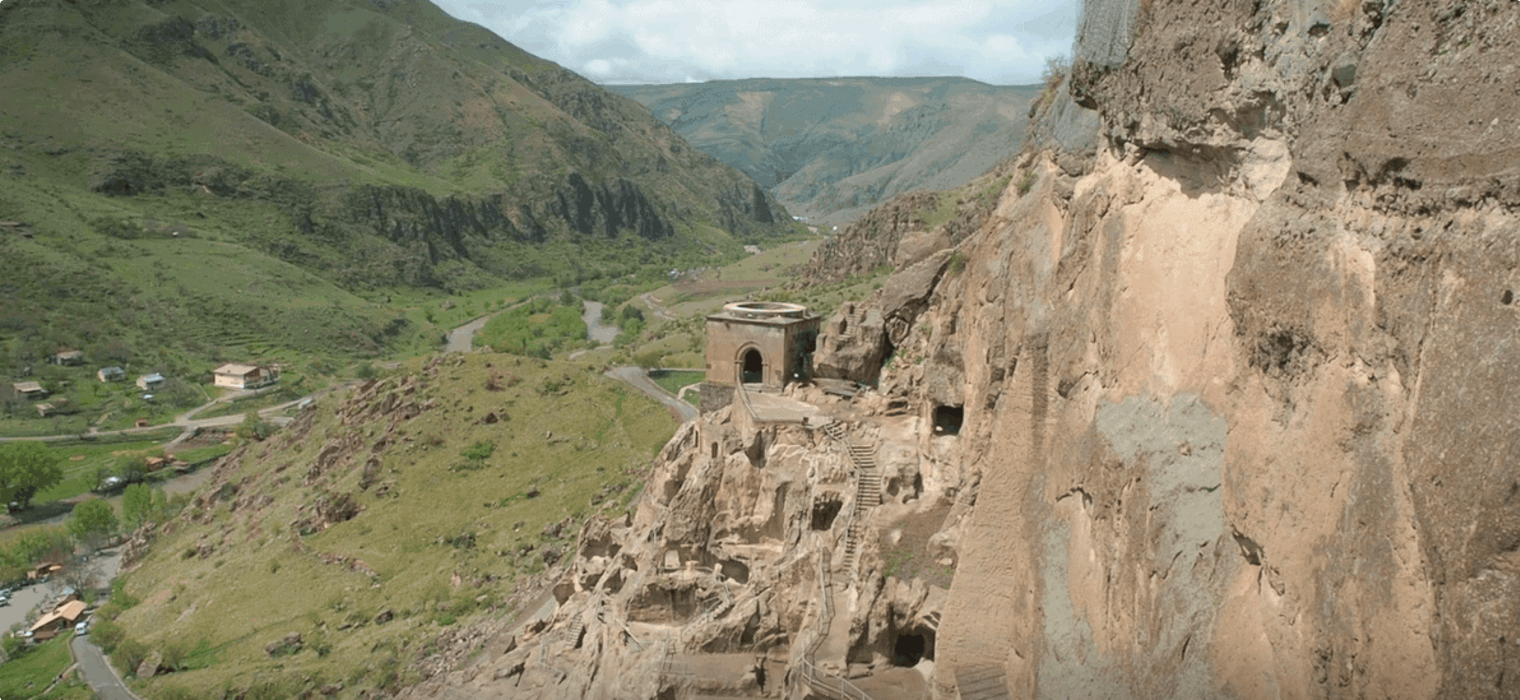
Discovering Georgia
Standing at the foot of the Caucasus Mountains, where Europe and Central Asia intersect, the land of Georgia is filled with wondrous landmarks and cultural experiences just waiting to be discovered on a sightseeing tour. A place of exotic beauty no bigger than Ireland. On a trip to Georgia you could ski down the slopes of striking mountain ranges in the morning and then swim in the Black Sea or hike through the desert in the afternoon. As cultural experiences a itinerary of Georgia with a good local guide will show the traveller whether a couple or the solo traveller, the deep religious devotion of the nation’s inhabitants, manifested in the many beautiful churches and monasteries that dot the country’s landscape, while lush vineyards, quaint villages and medieval castles and a yurt or two adorn the country’s picturesque countryside. In a trip to the country one can immerse themselves in the rich culture of world famous polyphonic singing and traditional music, folk dances and ballet, theatre and cinema, jewellery in colourful bazaars, local artisan embroidery or bukhara carpets, paintings and more. Despite Georgia’s turbulent history, the local people have retained an enduring sense of friendliness and hospitality, with any and all guests welcomed heartily to dinner with delicious food and drink.
In this article, we shall examine Georgia’s long and intricate history and look over some of its most fascinating landmarks and highlights. Odyssey Traveller offers many tours of the Caucasus region led by a local expert that guide travelers to explore the numerous historical sites throughout Georgia. So, if you’re interested in a guided tour of Georgia check out the itinerary of the tours we currently have available.
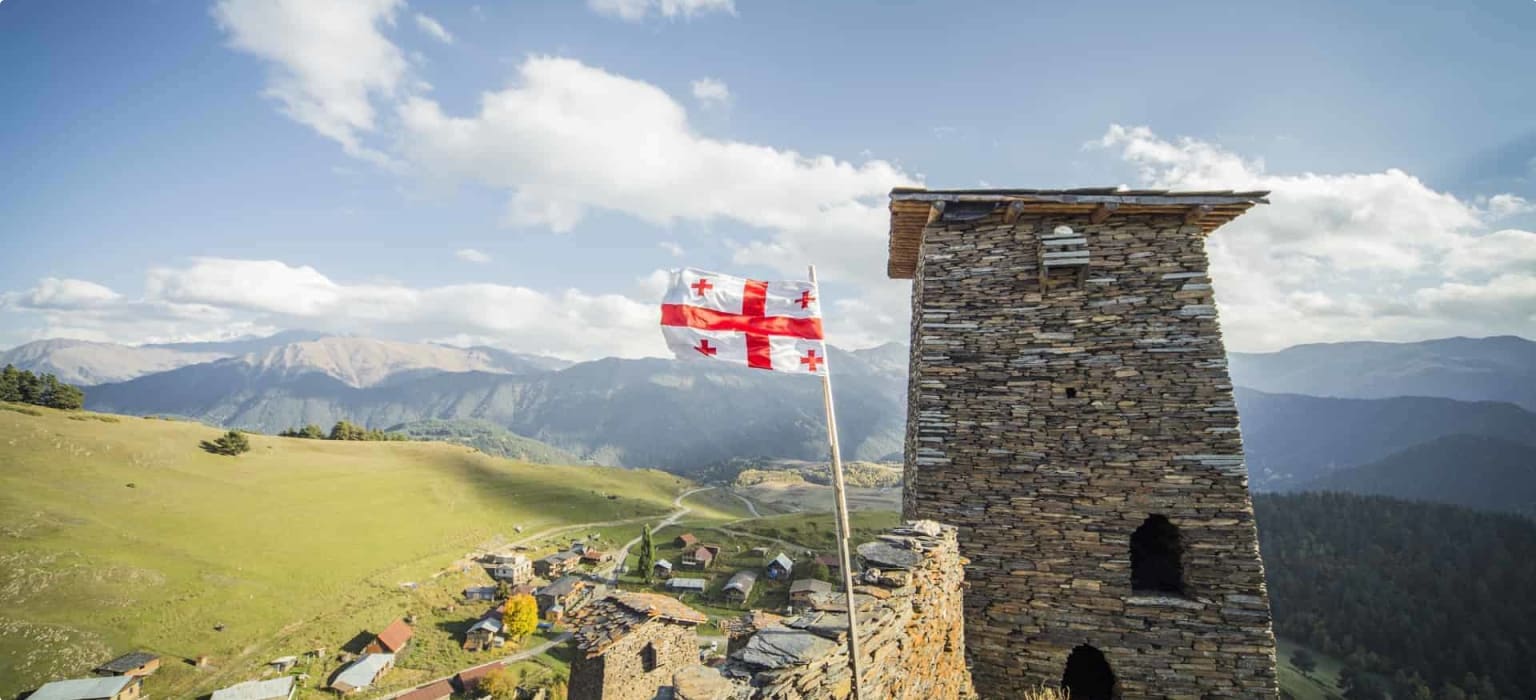
Early Beginnings
Human settlement in what is now modern Georgia stretches as far back as the early Paleolithic and Neolithic eras. The earliest agricultural settlements in Georgia date back to the 6 th millennium BC, with settled tribes engaging in farming and raising cattle and possibly the production of fabric for clothing. Odyssey’s small group tours Georgia history of fabrics are included to show the importance of this country in human settlement.
In the 1st millennium BC, the Diauhi and the Kulkha tribes began to hold sway over much of what is modern Georgian territory. Over the following centuries, began to coalesce into kingdoms in what is now modern Georgia, with the Taokhoi and the Kulkha inhabiting the Caucasus lands. Colchis, an area in what is now western Georgia, ended up being colonised by Greek settlers from Miletus, while the kingdom of Iberia developed in the east.
Foreign Domination
Georgia embraced Christianity at around the year 330, becoming one of the first states in the world to do so. For the next three centuries, Georgia was caught in the middle of the conflicts between the Byzantine empire to the west and Sassanid Persia to the east. Iberia ended up falling under Persian rule towards the end of the 5th century, with the Iberian monarchy being abolished by Sassanian emperor Khosrow I in the 6th century. Persia, Byzantium, and the later Arab caliphates would exercise control over much of Georgia for several centuries, with the city of Tblisi remaining under the control of an Arab emirate until 1122.
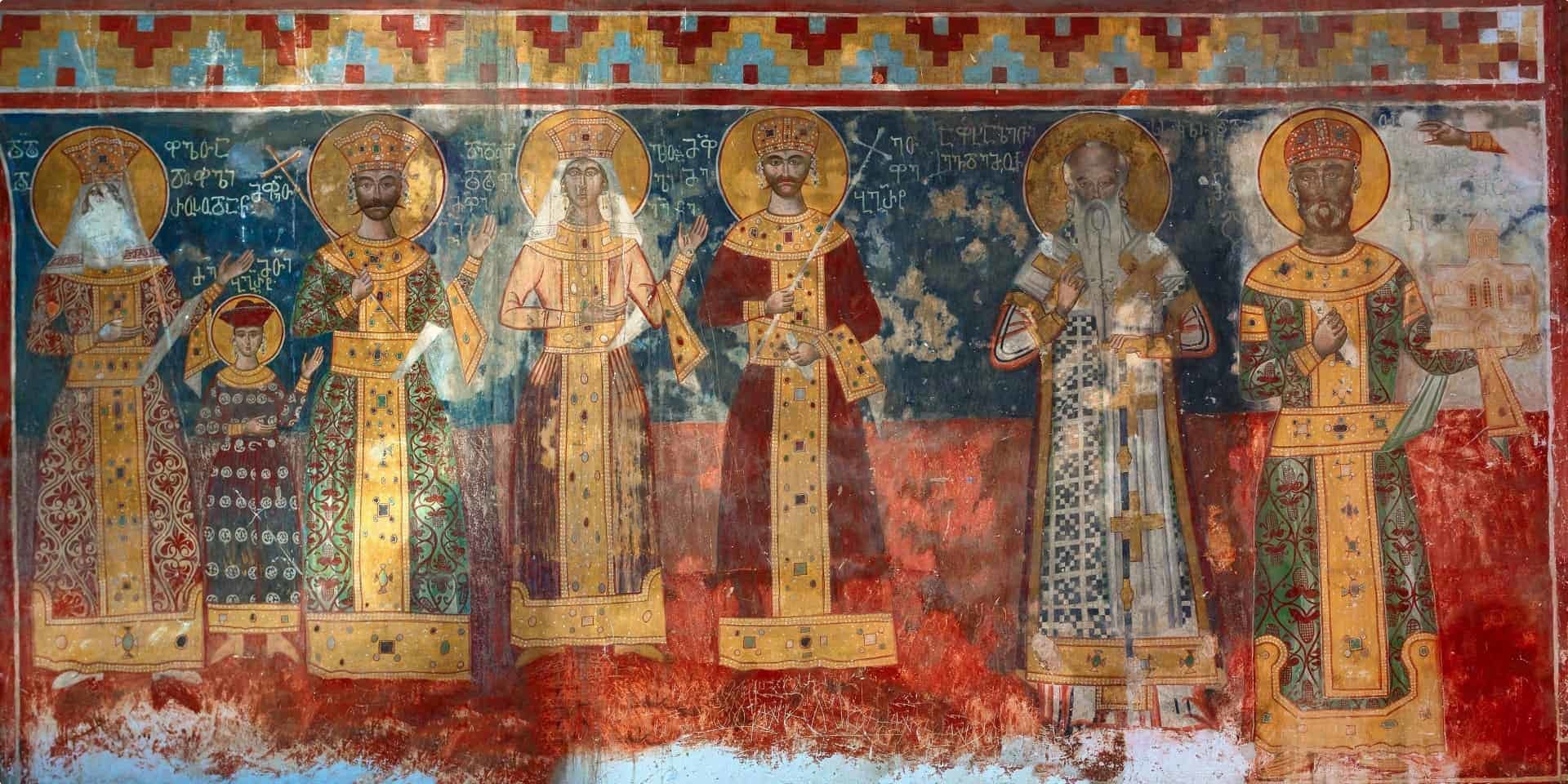
Golden Age
Towards the end of the 9th century, Ashot I of the Bagratid dynasty got a territorial foothold in Iberia, with King Bagrat III (reigned 975-1014) later uniting all the principalities of eastern and western Georgia (aside from the city of Tblisi) under one state. Georgian power reached its apogee under the reign of Queen Tamar the Great (reigned 1184-1213), with Georgia reaching its greatest territorial extent. Moreover, Georgian culture flowered during this time, with Georgian literature, art, and architecture all flourishing in the 12th and early 13th centuries. However, the invasion of the Mongols in the 13th century brought the Georgian kingdom undone. Although the yoke of Mongol rule was thrown off in the 14th century, Georgia would suffer tremendously from further invasions by Central Asian warlord Timur at the end of the century, with the kingdom of Georgia never truly recovering.
Invasion and Occupation
For several centuries, Georgia would suffer invasion and occupation at the hands of the two dominant powers of the region, the Ottoman Empire in Turkey and Safavid Persia. Towards the end of the 18th century, Georgia had managed to wrest itself free from Ottoman domination, though was still in a precarious position economically and diplomatically. In 1783, King Erekle II signed the Treaty of Georgievsk, in which Russian suzerainty over Georgia was acknowledged in exchanged for Russia’s recognition of Georgia’s territorial integrity and independence. At the turn of the 19th century, Georgia formally became incorporated into the Russian empire, though misrule by Russian governors would provoke several uprisings.

Soviet Era
The Russian Revolution in 1917 sparked the outbreak of civil war in the former Russian empire, with Georgia taking the opportunity to declare independence a year later. Following the establishment of the Soviet Union, the Red Army invaded Georgia in early 1921, and the country was forcibly incorporated into the USSR. Over the next several decades, Georgia would experience a harsh regime of repression under Soviet rule, with thousands arrested and executed in the 1920s and 1930s. During the course of this period, Georgian society experienced a transformation, shifting from an agrarian society to a predominantly industrial and urban society, while the Georgian language and literature were promoted during Soviet rule.
Modern Georgia
During the 1980s, the Georgian nationalist movement became resurgent, and civil unrest began to mount in Georgia. In 1991, Georgians voted overwhelmingly for independence in a referendum on the country’s future. Following independence, Georgia experienced a time of instability in the 1990s, with violent separatist movements flaring up in the Abkhazia and South Ossetia regions, and turmoil within the country’s government. In 2008, tensions between Georgia and the South Ossetia and Abkhazia regions erupted into open conflict, with the regions eventually breaking away with Russian support. Relations between Georgia and the separatist regions remain tense, with the Georgian government maintaining that Abkhazia and South Ossetia are Georgian territories.
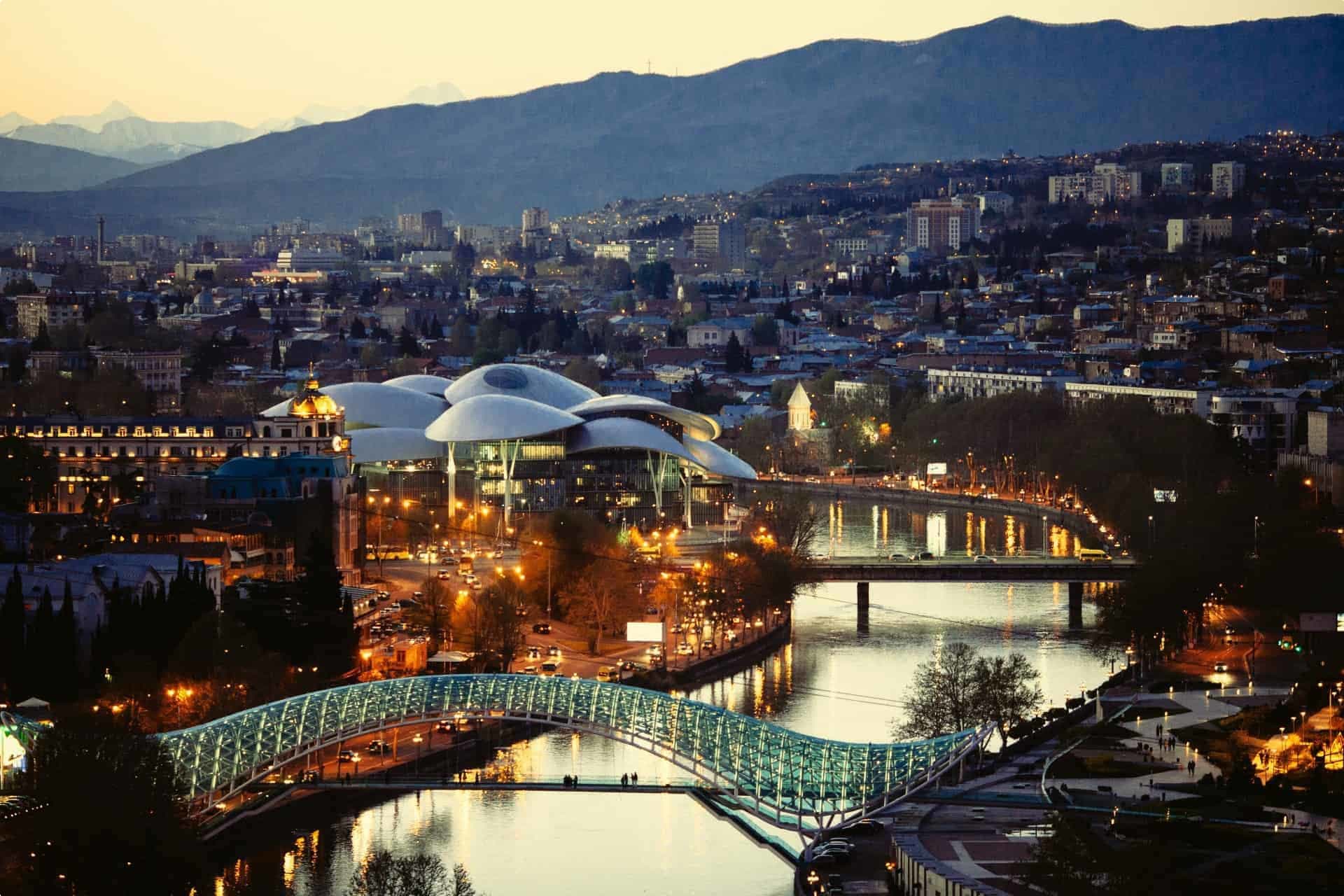
Visiting Georgia: Key Destinations
Despite being a relatively small nation (Georgia the country is under half the size of the US state of Georgia), there is no shortage of things to see and do. Here are a few places we would recommend exploring if you want to gain a richer insight into Georgia.
Vardzia
A remarkable cave monastery and fortress carved out of the slopes of the Erusheti Mountain. Dating back to the late 12th century, the monastery was constructed during the reign of Queen Tamar, and upon its completion, the monastery housed around 2,000 monks and was an important religious centre in the region. The complex originally contained 13 separate levels, 6,000 apartments, a throne room and a large church, though much of the site was destroyed by a major earthquake in 1283. The monastery remained in operation however until 1551, when it was ransacked by Persian soldiers. Following the end of Soviet rule, the monastery at Vardzia was restored to operation, with a small group of monks maintaining the site
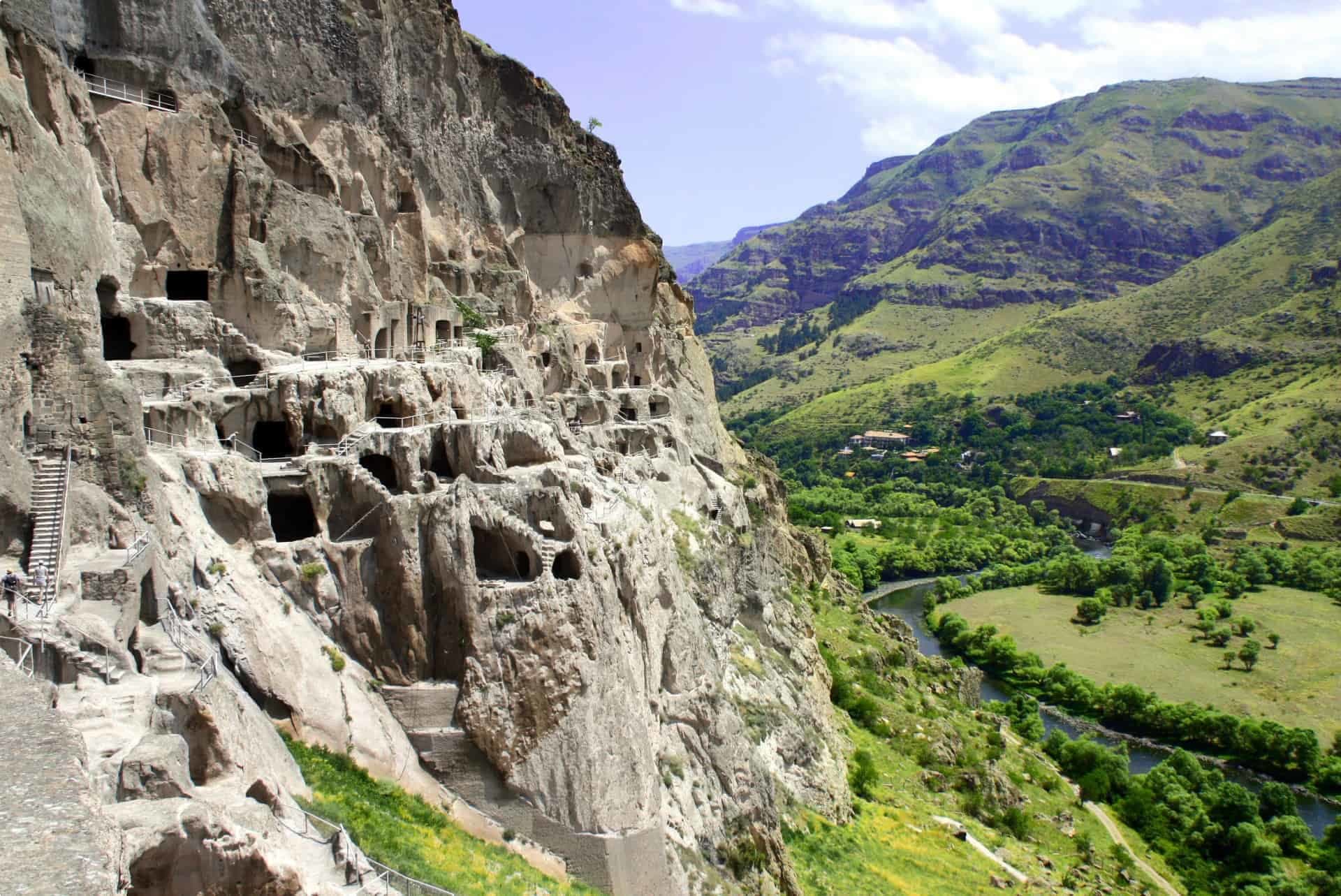
Dadiani Palace
Built as the residence of the Dadiani family of the Principality of Samegrelo in the 19th century, the Dadiani Palaces History and Architectural Museum stands as one of the finest examples of the 19th century Georgian architecture. Located in the city of Zugidid, the complex includes the palace of Ekaterine Chavchavadze-Dadiani, the last queen of Samegrelo, and the Zugdidi Botanical Gardens. The entire site was later converted into a museum in the 1920s, and now contains over 40,000 items.
Upper Svaneti
Included on the UNESCO World Heritage List, the Upper Svaneti region of Georgia is an ancient and remote land of medieval-style villages and tower-houses tucked away in the mountain peaks of the Caucasus. Around 175 defensive stone towers, many of which were built between the 9th and 13th centuries, remain here today. While there has been more tourists flocking to Upper Svaneti in recent years, the region has been mostly preserved due its long-lasting geographical isolation and for this reason the whole area is a UNESCO site. Svaneti is also home to Georgia’s largest glaciers, so the natural landscape here is just as captivating as the unique architecture.

Gelati Monastery
Located in the city of Kutaisi, Gelati Monastery is a UNESCO World Heritage site and one of the most iconic buildings in Georgia. Founded in 1106 by King David the Builder, the monastery was an educational and cultural hub in medieval Georgia – an academy there attracted some of the most prominent intellectuals of the age, while the scriptorium housed an extensive collection of manuscripts. The interiors of the monastery’s buildings are lavishly decorated, with the Cathedral of the Virgin and the Church of St George both featuring stunning religious frescoes. Today, the Gelati Monastery remains standing as a monument to the Golden Age of Georgia.
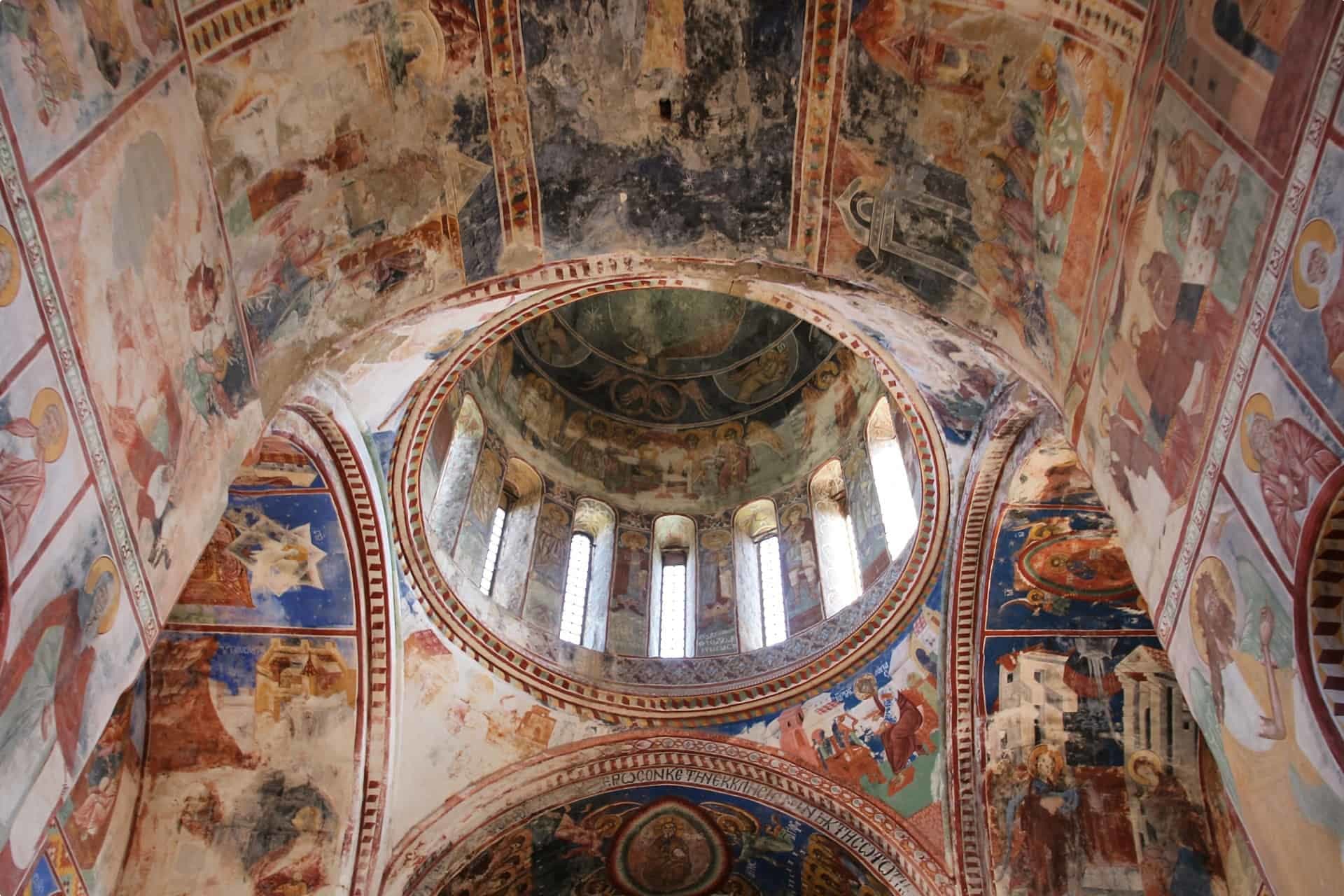
Svetitskhoveli Cathedral
An Eastern Orthodox cathedral located in the town of Mtskheta, the site was originally founded in the 4th century AD and is one of the most important religious sites in the country. According to Georgian legend, Svetitskhoveli is the burial site of Christ’s robe, and has long since been an important religious and cultural site in Georgia. The present structure was completed in the 11th century, and is the second largest church building in Georgia.
Batumi
Sometimes called the Pearl of the Black Sea and often compared to Las Vegas, this port city is the capital of Georgia’s autonomous Adjara region. With a warm, subtropical climate, a long stretch of beach and a striking backdrop of snowy mountain peaks, there is a lot to love about Batumi. The city has a reputation for its quirky architecture and the cultural and religious composition of Batumi, in comparison to the rest of Georgia, is also very unique. From Batumi, you can easily travel to Mtsvane Tba, a turquoise-coloured lake that lies 2,058m above sea level in the Goderdzi Pass.
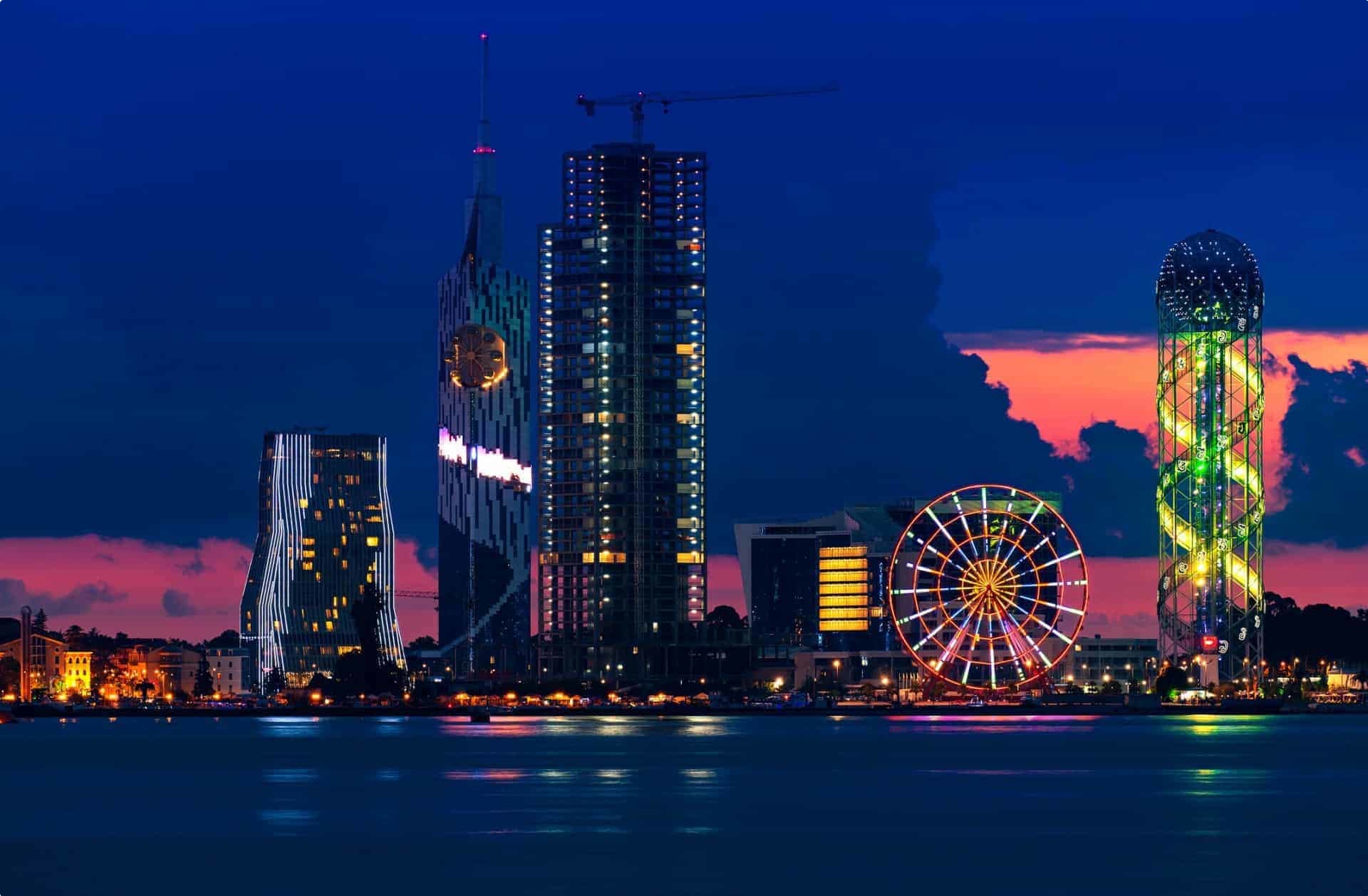
Khertvisi Fortress
Situated in the Meskheti region in Georgia’s south is one of the country’s oldest fortresses: the Khertvisi Fortress. The fortress itself was built in the 2nd century BC but allegedly destroyed by Alexander the Great. The current fortifications date back to the 14th century.

Gergeti Trinity Church
Constructed in the 14th century, Gergeti Trinity Church is situated against the spectacular backdrop of Mount Kazbek, one of the highest peaks in the Caucasus Mountains. The church itself stands at an elevation of 2170 metres, and overlooks the small town of Stephantsminda. Its isolated location meant that in times of danger the church was used as a site of refuge in the past, with precious religious relics hidden there during times of conflict. Although religious services were prohibited in the Soviet era, religious activities resumed in the church following the end of the Soviet rule.

Tbilisi
Over 1,500 years of history have left the nation’s capital with an eclectic array of sights and a unique cultural feel. The imposing Narikala Fortress looms over the city, and has stood for as long as the city has existed. Tbilisi’s eye-catching Old Town is a labyrinth of twisting alleyways and colourful houses spilling down the side of Mount Mtatsminda, and offers a window into Tbilisi’s past. To this day, the locals engage in the lively cut-and-thrust of haggling and negotiation at the city’s famous Dry Bridge Flea Market, which is home to a huge assortment of antiques, jewellery, books, and artwork. Essential stops in Tbilisi include Anchiskhati Basilica, the city’s oldest surviving church built in the 6th century, and the Botanic Gardens, established as a royal pleasure ground in 1636 and one of the city’s hidden gems. In the gardens you’ll find over 4,500 species of plants and plenty of locals enjoying picnics. Tbilisi National Park is located 25km north of the city and was established in the mid-20th century in order to preserve the forest characteristic of Georgia and protect the rare species that lived in the region such as Caucasian Red deer and lynx.

Eating, Drinking and Hospitality in Georgia
Food, drink, and communal feasting are all held dear to the hearts of Georgians, with the people of Georgia priding themselves on the hospitality they show to guests. Georgian food benefited from a range of external cultural influences, with Georgian cuisine bearing the hallmarks of Turkish, Persian, Russian and Central Asian cuisines. Khinkali, dumplings filled with meat and vegetable fillings, are a national favourite, while regional dishes such as dolma (grape leaves stuffed with vegetables) and skewered meats also feature prominently on the menus of Georgian restaurants.
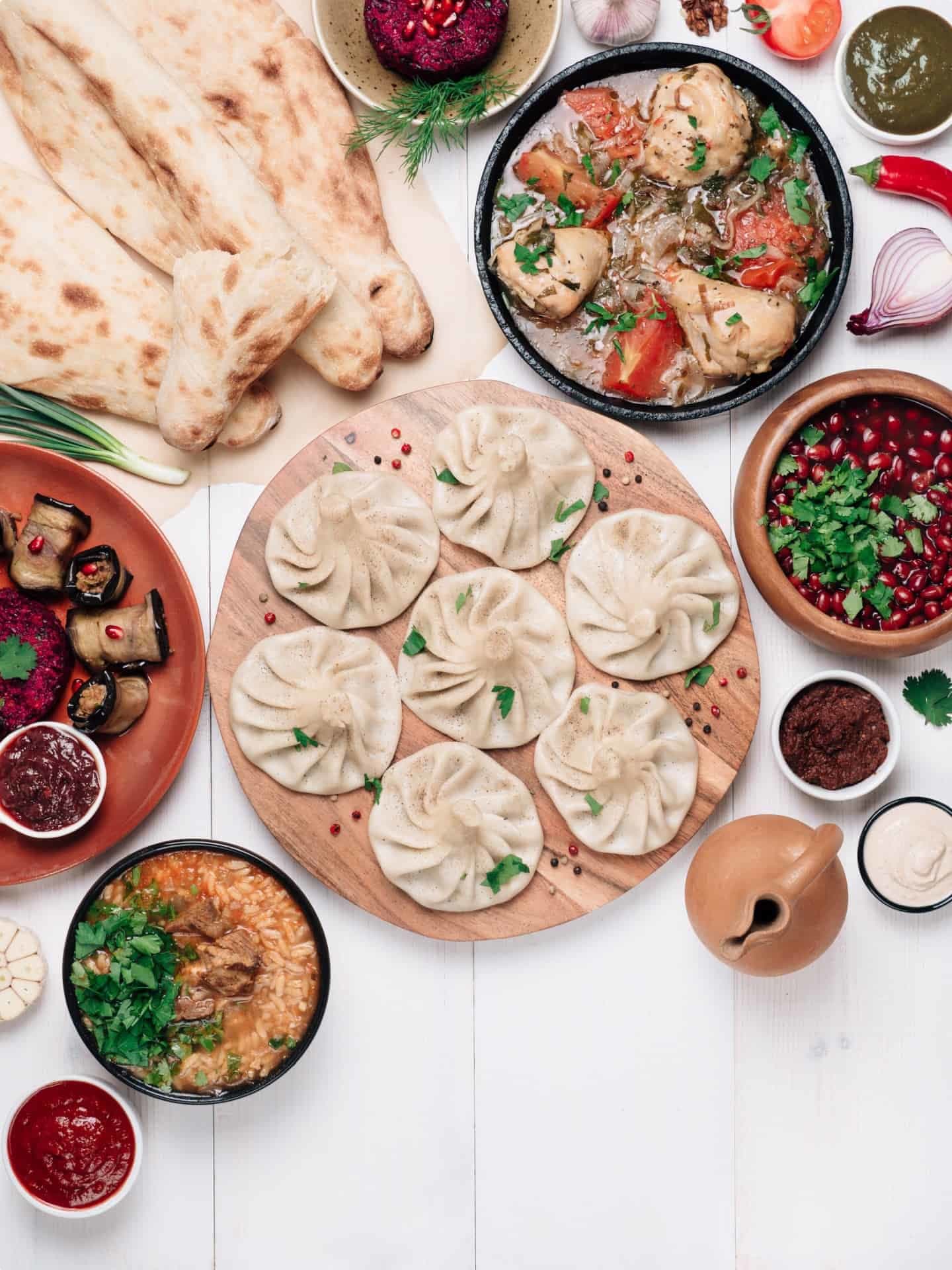
Georgia has a long history of wine-making, with Georgians claiming the Kakheti region was one of the first areas in the world to start viticulture practices. Today, wine is an important part of social gatherings and festive meals. If you’re exploring this Caucasus nation, it is definitely worth sampling the best Georgian wines the country has on offer.

Odyssey Traveller is dedicated to providing quality educational tours for mature travellers looking to explore the world. Georgia, alongside neighbouring countries Armenia and Azerbaijan, are all explored in Odyssey Traveller’s 22 day group tour of the Caucasus, so if you want to learn more, click here to find out!
Published October 2019. Updated Sept 2020.
Related Tours
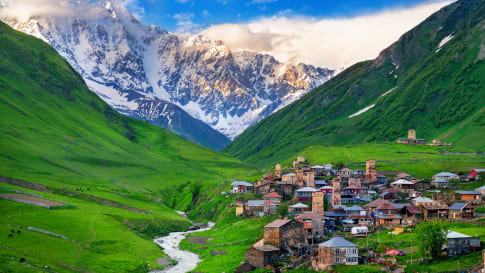
22 days
May, OctSmall Group Tour to the Caucasus | Armenia Azerbaijan Georgia
Visiting Armenia, Azerbaijan
This small group program is designed to give people an opportunity to explore Tbilisi, Baku, Yerevan as well as important monuments, historical and religious sites, diverse landscapes and ancient architecture by visiting the Caucasus Mountains and the lowlands of Armenia, Georgia and Azerbaijan. Led by local English speaking guides, there will be the opportunity to meet local people.
From A$11,835 AUD
View Tour
22 days
Jun, SepExploring Kazakhstan | Small Group Tour
Visiting Kazakhstan
Visit the largest landlocked country in the world, Kazakhstan. Once part of the Mongol and Russian Empires, Kazakhstan is where man first tamed wild horses on the vast Kazakh Steppe, the dry grassland that dominates its landscape and connects it with Europe and the rest of Asia. A escorted small group tour for mature and senior travellers, couples and solo travellers.
From A$11,995 AUD
View Tour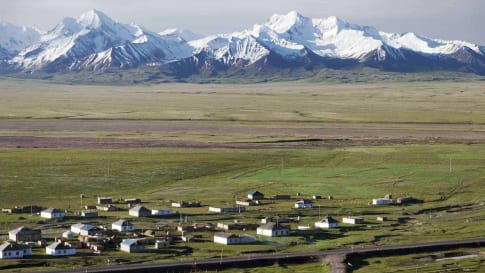
7 days
Jun, SepTajikistan Tour | Central Asian Small Group Tour
Visiting Tajikistan
We explore the country’s astonishing scenery and monuments. Tajikistan is the smallest of the 5 ‘Stans and is also the most mountainous. On our small group tour for couples and solo travelers we encounter many ranges and mountain chains where we reach well over 3,000 metres above sea level while crossing passes.
From A$4,950 AUD
View Tour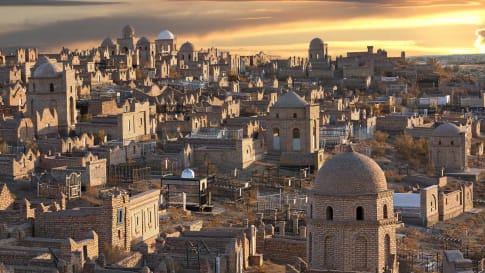
27 days
May, AugThe Stans Small Group Tour: Uzbekistan, Kazakhstan, Kyrgyzstan, and Turkmenistan
Visiting Kazakhstan, Kyrgyzstan
This journey is crafted for the adventurous traveller—whether solo or as a couple—seeking a small group tour through Central Asia. Be prepared for a variety of accommodations, scenic walking excursions, and a few full travel days. The itinerary blends stunning landscapes, a mix of ancient and modern history, as well as authentic encounters with local families and dramatically different ways of life.
From A$17,650 AUD
View Tour

